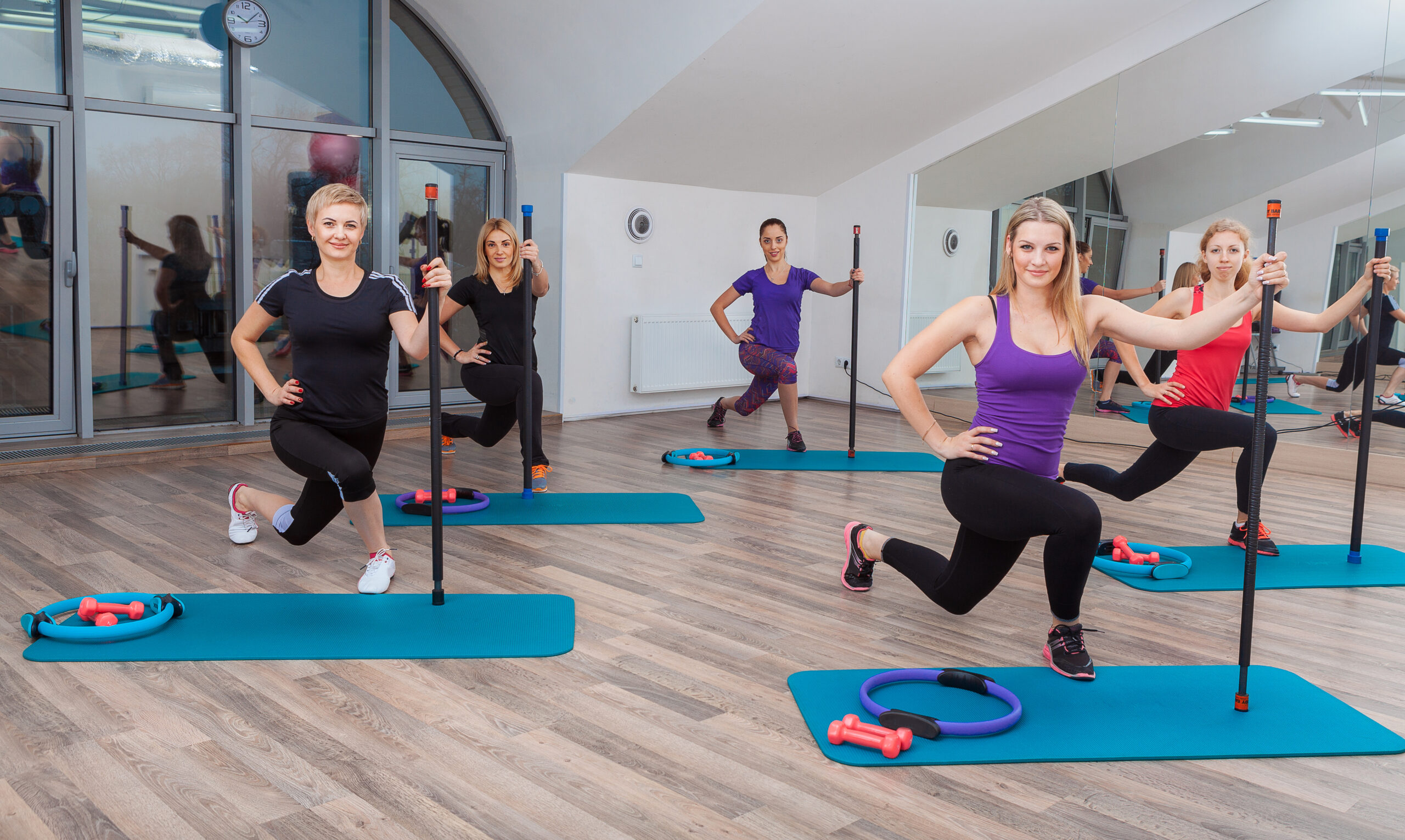Aerobics is a fun and exciting type of exercise that uses big muscle groups in steady, repetitive motions to focus on cardiovascular fitness and endurance. This activity increases the heart rate, which enhances the body’s capacity to use oxygen effectively. Aerobics is important for more than just physical fitness; it’s essential for weight loss, mental health, and general health. The several types of aerobics, their benefits and drawbacks, and their significant contribution to weight loss will all be covered in this thorough review.
What is Aerobics?
The term “aerobics” comes from the Greek words “aero” (air) and “bics” (physical activity that increases heart rate). In the 1970s, Dr. Kenneth Cooper popularized aerobics by developing a systematic approach to cardio-respiratory fitness, emphasizing regular exercise for cardiovascular health. Aerobics improves heart function, boosts energy, and supports mental health. It is accessible to all ages and fitness levels, and its adaptability has led to the emergence of various subgenres suited to different preferences.
Various Forms of Aerobics
Numerous forms have developed over time, each with special advantages and traits. I go over a few of the most well-liked aerobics forms that people could think about include in their workout routines below.
1. Low-Impact Aerobics
Movements that maintain one foot on the ground at all times are its defining characteristics. This style reduces the chance of injury while still offering a good cardiovascular workout, making it especially appropriate for novices, older adults, or people with joint problems. Simple, easy-to-follow motions that emphasize keeping a steady pace are common in classes.
Benefits:-It can be used by persons of all fitness levels because it is less taxing on the joints.
– By lowering the chance of injury, people can exercise without feeling overly stressed.
Drawbacks:-For seasoned athletes looking for a more difficult workout, it could not offer the intensity needed.
2. High-Impact Aerobics:–High-impact aerobics involves rapid motions and jumping, which causes the body to work harder than low-impact aerobics. This type of training is well-liked by experienced athletes who want to push themselves since it promotes increased calorie burning and improves cardiovascular endurance.
Benefits:-It is an effective training choice because it burns more calories in a shorter amount of time.
– Significantly improves cardiovascular fitness and stamina.
Drawbacks:-Because the workouts are so strenuous, there is a greater chance of damage, especially for people who already have joint or cardiovascular problems.
3. Step Aerobics
Participants move in a synchronized manner while using an elevated platform or step. This type of aerobics uses different step heights to increase intensity and challenge while combining strength training and cardiovascular exercises.https://thinkmewise.com/step-aerobics-a-comprehensive-guide/
Benefits:– Enhances coordination and balance, two essential aspects of overall physical fitness
– It gives a great cardiovascular workout and strengthens the lower body.
Drawbacks:
– It calls for appropriate approach to prevent injuries or falls, which calls for some level of prior supervision or instruction.
4. Dance Aerobics
It incorporates dance moves with conventional aerobic exercises, taking cues from hip-hop, salsa, and Zumba, among other dance forms. This type of aerobics successfully lessens the boredom frequently connected with conventional exercise by letting participants enjoy their activity while expressing creativity and rhythm.
Benefits:– enjoyable and captivating, which promotes long-term commitment to fitness regimens and reduces the psychological toll of exercise.
– enhances rhythm, flexibility, and coordination, all of which add to general physical fitness.
Drawbacks:– For those looking for intense cardiovascular workout, it might not be intense enough.
5. Circuit Training
Circuit training is doing a sequence of strength-based and aerobic workouts one after the other with little to no break in between. This adaptable type of aerobics is a good choice for people with little time because it can be tailored to fit each person’s tastes and fitness level.
Benefits:-promotes both muscle tone and cardiovascular conditioning at the same time by combining strength and cardio for a well-rounded workout.is easily adaptable to various training objectives and levels.
Drawbacks:-Some people can find it difficult to set up a suitable circuit since it might require specialized tools or space.
6. Water Aerobics
It comprises navigating a swimming pool while using the water’s buoyancy to support the body and reduce impact. Because the water creates a low-impact exercise setting, this approach is especially helpful for people with mobility difficulties or those recuperating from injuries.
Benefits:– It is a great choice for people with chronic pain or arthritis because it lessens the strain on joints.
– increases muscle strength and endurance by using resistance training in water.
Drawbacks:– may necessitate pool access, which would prevent certain people from participating.

The Role of Aerobics in Weight Reduction
Because exercise increases metabolic function and burns calories, aerobics is a major factor in weight loss. Weight loss requires a calorie deficit, which regular aerobic exercise may produce. The intensity and length of the workouts, each person’s metabolic rate, and dietary practices all affect how efficient aerobics is at helping people lose weight. https://www.healthline.com/health/fitness-exercise/benefits-of-aerobic-exercise#benefits
1.Caloric Burn and Weight Loss
Body weight, activity intensity, and duration all affect how many calories are burned during aerobic exercise. As an illustration, high-impact aerobics can burn significantly more calories in a shorter amount of time than low-impact aerobics. But consistency is essential; those who regularly work out aerobically, regardless of the type, have a higher chance of losing weight in a way that lasts.
2. Metabolic Benefits
In addition to burning calories during exercise, it can enhance metabolic function in the long term. Regular aerobic activity can improve insulin sensitivity, increase resting metabolic rate, and promote fat oxidation, contributing to weight management. Moreover, the cardiovascular benefits can lead to improved overall health, reducing the risk of obesity-related conditions such as heart disease, diabetes, and hypertension.
3. Psychological Factors
The psychological benefits of aerobics should not be overlooked in the context of weight reduction. Engaging in regular aerobic exercise can boost mood, reduce stress, and enhance motivation, all of which are crucial for maintaining a healthy lifestyle. The enjoyment derived from various forms of aerobics, such as dance or group classes, can foster a positive relationship with exercise, making it more likely that individuals will stick to their fitness routines.
Conclusion
Aerobics is a multifaceted and versatile form of exercise that offers numerous benefits, particularly in cardiovascular health and weight reduction. With various forms available, individuals can choose the type of aerobic exercise that best suits their preferences and fitness levels. Whether opting for low-impact aerobics, high-impact routines, or dance-based workouts, the key to successful weight management lies in consistency, enjoyment, and the integration of aerobic exercise into a balanced lifestyle. By understanding the different forms of aerobics and their respective benefits and drawbacks, individuals can make informed decisions about their fitness journeys, ultimately leading to improved health and well-being.
Recommendation for Readers
Amazon.com
- Tone Fitness Compact Aerobic Step Platform
- Step Aerobic Platform with 4 Stackable Risers Exercise
- Steppers for Exercise at Home, Air-Powered Mini Steppers with Resistance Bands for Home Fitness
Amazon.in
- Aerobic Step Medium
- Lifelong Polypropylene Adjustable Home Gym Exercise Fitness Stepper for Exercise Aerobics Stepper
- PowerMax Fitness BS-MINI Mini Cycle Pedal Exerciser










